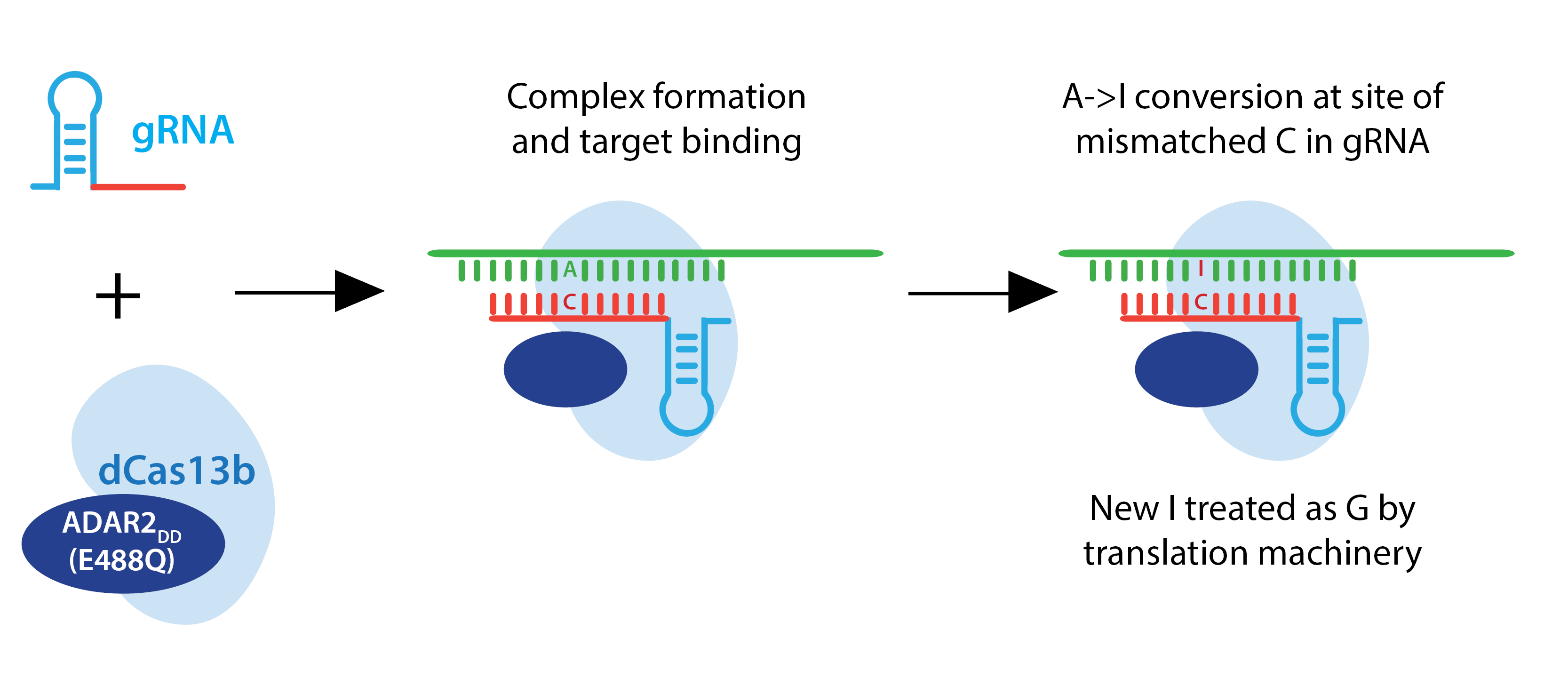CRISPR Plasmids: RNA Editing
Type VI CRISPR systems, including the enzymes Cas13a/C2c2 and Cas13b, target RNA rather than DNA. Fusing the catalytic domain of ADAR2(E488Q) adenosine deaminase to catalytically dead Cas13b creates a programmable RNA editor that converts adenosine to inosine in RNA. Since inosine is functionally equivalent to guanosine, the result is an A to G change in RNA. dPspCas13b does not require a Protospacer Flanking Sequence (PFS), making it a very flexible editing system. The T375G mutation reduces off-target effects of ADAR2 by destabilizing its RNA binding. Editors carrying the delta-984–1090 ADAR2 truncation retain RNA editing capabilities but are small enough to be packaged in AAV particles.

Browse, sort, or search the tables below for CRISPR plasmids designed for RNA editing. To learn more about RNA editing and other CRISPR topics, read our CRISPR Guide.
Mammalian
| ID | Plasmid | Gene/Insert | PI | Publication |
|---|
CRISPR Resources
Addgene has a large selection of CRISPR plasmids and resources. Find more CRISPR functions along with plasmids categorized by organism by visiting our CRISPR plasmids page. Find a comprehensive list of CRISPR resources by visiting our CRISPR reference page.
Content last reviewed: 17 October 2025
Do you have suggestions for other plasmids that should be added to this list?
Fill out our Suggest a Plasmid form or e-mail [email protected] to help us improve this resource!



